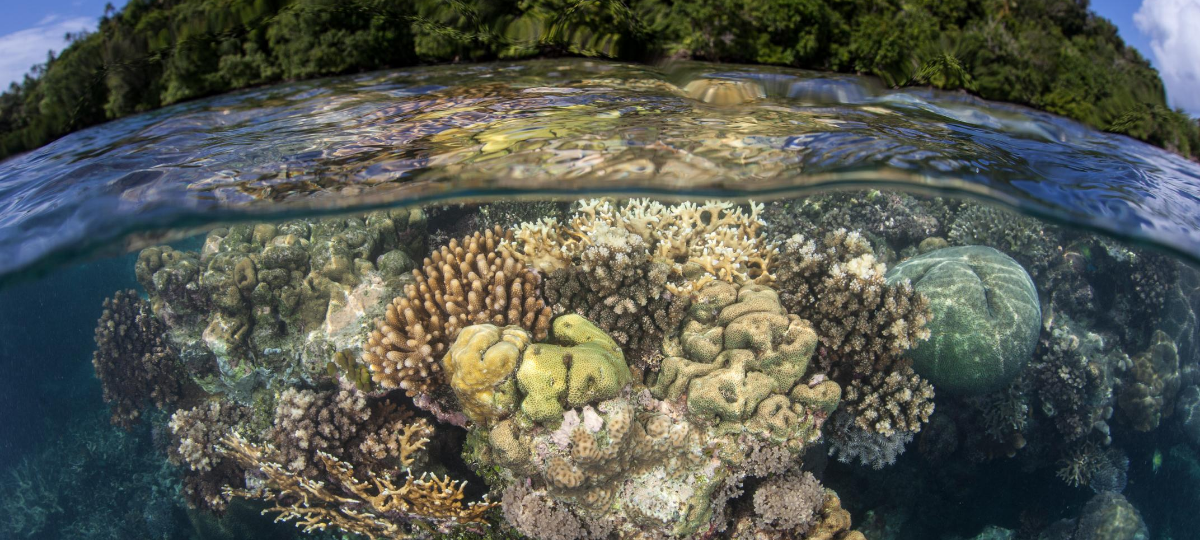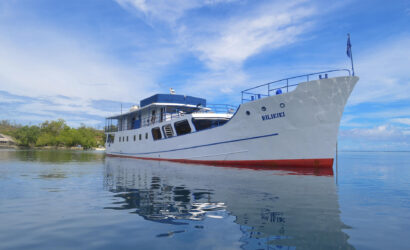Melanesia

DIVING HOTSPOT IN OCEANIA
With Fiji, Vanuatu, the Solomon Islands and Papua New Guinea, Melanesia contains some of the world’s best countries for scuba diving. From soft corals, wrecks, caves and sharks, your liveaboard trip will be a unique experience.
Melanesia is a subregion of Oceania extending from New Guinea island in the southwestern Pacific Ocean to the Arafura Sea, and eastward to Tonga.
The region includes the four independent countries of Fiji, Vanuatu, Solomon Islands, Papua New Guinea, as well as the French special collectivity of New Caledonia, and parts of Indonesia – particularly Western New Guinea. The area mainly consists of islands, archipelagos and atolls. This makes it a great hotspot for underwater adventures.
Volcanic activity created some amazing underwater landscapes with caverns, caves, overhangs and swim-throughs. Around the atolls, there are some low-lying coral reefs for easy dives or even snorkeling. During World War II the region was the battleground between Japanese and American forces, and wreckage from that time still lies in the now-peaceful waters, creating a submarine war museum for visiting divers.
BEST TIME TO VISIT MELANESIA
Diving in the countries of Melanesia is possible year-round as the visibility never drops below 15 meters. Most divers visit the area between April and October. In November, April and May the water is the warmest with 28 to 30°C.
BEST PLACES TO DIVE IN MELANESIA
Fiji is also known as the “Soft Coral Capital of the World”. Fiji has some of the most diverse coral reef ecosystems in the world with many different species of soft corals. The underwater landscape of Fiji is a playground for divers with wall-dives, swim-throughs, caverns and canyons. And it’s a shark hotspot. Thanks to nutrient strong currents the pelagic encounters in the blue are very common.
Vanuatu consists of 83 islands and is world-known for its incredible underwater landscapes with wonderful corals, sea fans and caves, as well as its historical WWII wrecks. Many people all over the world come here to see the cute dugongs, as the chances here in Vanuatu are pretty good to spot them.
The Solomon Islands are in no way inferior to Fiji or Vanuatu. Its underwater world is as rich and adventurous but less-crowded. The reefs have remained healthy here and consist of large sea fans, steep walls, soft corals and muck. The dive sites show and incredible biodiversity. Fans of wrecks will love the historical sunken ships of WWII.
Papua New Guinea has some of the best marine biodiversity. No wonder as this country is part of the Coral Triangle. But it is not only an adventure underwater but also above the surface with tropical jungles and high mountains. Papua New Guinea offers different types of marine ecosystems to explore: barrier reefs, coral walls, fringing reefs and seagrass beds. And there are some great WWII wrecks to explore too.
LIVEABOARDS IN MELANESIA
The liveaboard operators offer divers the exceptional chance to really get away from it all and just explore the majestic underwater world with all its fantastic reefs and wrecks. As the season’s change, and along with them the weather and diving conditions, some liveaboards relocate their dive tours to places with better weather. So before you book, make sure your favorite liveaboard offers the trip you want to do.
Solomons
A HIDDEN GEM FOR SCUBA DIVERS
The Solomon Islands offering a huge variety of attractions: historical WWII wrecks, lush coral reefs and different endemic species. One should wonder, why is it still undiscovered by the masses. Explore these outstanding place on your liveaboard trip.
The Solomon Islands are a sovereign state consisting of six major islands and over 900 smaller islands in Oceania lying to the east of Papua New Guinea and northwest of Vanuatu and covering a land area of 28,400 square kilometres. Because the islands are so remote, they are still undiscovered and uncrowded – and they are part of the coral triangle.
But the remoteness is an advantage for the underwater world. There are plenty of tropical dive environments to discover including caverns, wrecks, coral reefs, walls with huge sea fans and even muck diving is possible.
For wreck lovers the Solomon Islands are a special place to go. Plenty of WWII wrecks are waiting to be discovered. Most of the wrecks are in shallow areas, which makes them also interesting for recreational divers. Due to the lack of pressure, the wrecks are in a very good condition.
Apart from wrecks, divers might see pygmy seahorses, ghost pipefish, nudibranchs, xenon crabs, mantis shrimp, ribbon eels and hairy squat lobster. Clown fish, bumphead parrotfish and cuttlefish are commonly spotted. Schools of jacks, barracudas and tuna often approach from the blue. Lucky divers will spot reef sharks, napoleon wrasse and clusters of mantas.
BEST TIME TO DIVE IN THE SOLOMON ISLANDS
The Solomon Islands can be visited year-round. However, between January and April the monsoon season occurs, which brings rain and wind. June to August is the cooler month but the temperature never falls below 25 degrees in average. The water temperature keeps between 27°C and 31°C the whole year.
BEST DIVE SITES IN THE SOLOMON ISLANDS
Leru Cut is a dramatic underwater canyon that cuts Leru Island. Open to the air at the top, though you can’t always see vertically upwards, once at the end of the slot, you can surface and look up against vine-clad vertical rock walls.
Twin Tunnels are two big lava tubes tunnels of 120m in diameter are covered with fans and whip corals and surrounded by fish of every hue and schools of fusiliers. On the walls, look for the 9 different species of anemonefish, pygmy seahorses, cuttlefish, octopus, moray eels, just to mention a few. Other marine species are baitfish, kingfish or tuna.
Devil’s Highway has a resident population of manta rays that fly in the currents of these dive site to feed some plankton. The dive site is a shallow reef. Other pelagics can be spotted to, like sharks. You might need to hook into the reef to enjoy the adventure.
LIVEABOARDS IN THE SOLOMON ISLANDS
There are not many liveaboards operating in the Solomon Islands. That makes your dive safari to a very special trip with a lot of adventure feeling. It is definitely the best and most comfortable way to explore all the underwater gems.


